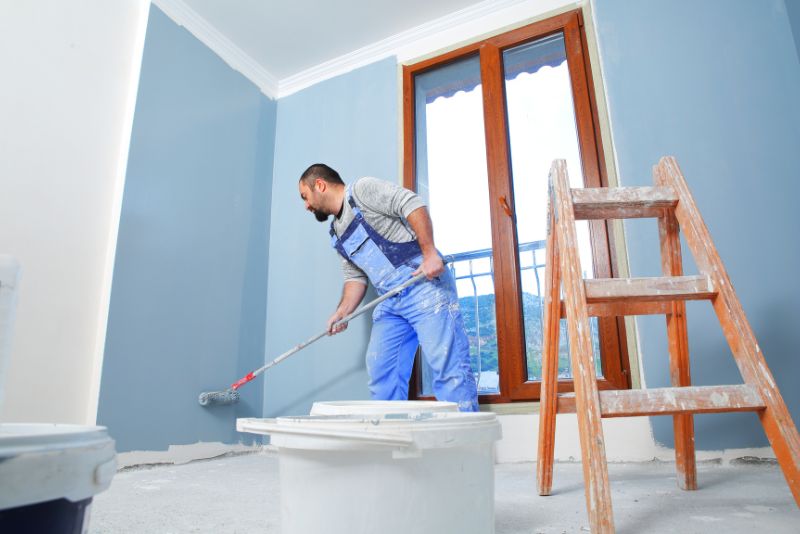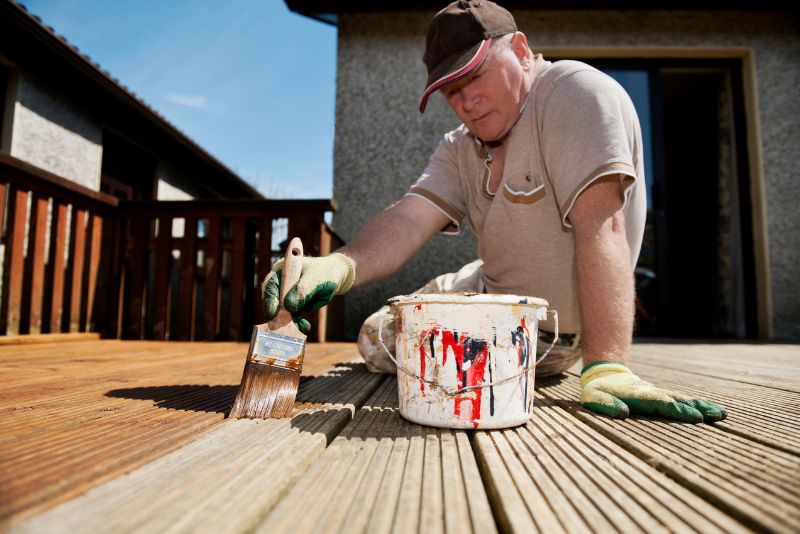If you’re painting your home or business for the first time, it’s essential to do it right. There are a few tricks and tips that will help you achieve a professional finish. In this blog post, we will discuss some of the most important things to keep in mind when painting your property. We’ll also provide some helpful tips on how to make the process easier and more efficient. So if you’re ready to get started, keep reading!
Types of paint and when to use them
A good start is understanding the different types of paint and when to use them. For example, there are two main types of paint: latex and oil-based. Latex paint is the most popular type of paint for both home and commercial use. It’s easy to apply, dries quickly, and is relatively inexpensive. Oil-based paint is more durable and resists fading and chipping than latex paint. However, it’s also more challenging to apply and takes longer to dry. Therefore, it’s usually only used for high-traffic areas requiring a more durable finish.

How to prepare the surface for painting
i). Clean the surface: Use a mild detergent and a soft cloth to remove any dirt, dust, or grease from the surface.
ii). Sand the surface: This step is only necessary if you’re painting over an existing paint job. Use fine-grit sandpaper for sanding the surface lightly. This will help the new paint adhere better.
iii). Prime the surface: Priming is only necessary if you paint over an existing paint job. It’s also an excellent idea to primer if you’re painting a dark colour over a light one, or vice versa. This will help to even out the colour and prevent streaking.
iv). Tape off any areas that you don’t want to be painted: This includes baseboards, mouldings, windows, doorframes, etc.
v). Choose your paint: There are a variety of paints to choose from these days. Some are even specifically designed for certain surfaces (e.g. painting cabinets or painting metal).
vi). Paint the surface: Start with a small section and work your way up or down, depending on where you’re painting. Use long, even strokes and be sure to overlap each stroke by about 50%.
vii). Remove the tape: Once the paint is dry, carefully remove the tape from any areas you had taped off.
viii). Clean up: Any paint on areas you don’t want to be painted can be removed with a damp cloth or sponge. Be sure to clean up all of your painting supplies before you put them away.
Painting techniques for different finishes
The painting techniques you use will depend on the type of finish you’re looking for. Here are some standard painting techniques and finishes:
1. Basic paint job: Use a roller for large, flat surfaces and a brush for smaller areas or areas with more detail. For a primary paint job, two coats of paint should be sufficient.
2. High-gloss finish: For a high-gloss finish, use a roller for large, flat surfaces and a brush for smaller areas or areas with more detail. Apply three coats of paint, letting each coat dry completely before applying the next.
3. Matte finish: For a matte finish, use a roller for large, flat surfaces and a brush for smaller areas or areas with more detail. Apply two coats of paint, letting each coat dry completely before applying the next.
4. Textured finish: Apply joint compound to the surface using a putty knife for a textured finish. Once the joint compound is dry, apply one or two coats of paint to the surface using a roller or brush.
Tips for avoiding common mistakes
To avoid common painting mistakes, it is essential to:
– Choose the right paint for the job. This means selecting a type of paint appropriate for the surface you are painting and the desired finish.
– Prepare the surface before painting. This includes removing old paint, cleaning the surface, and repairing any damage.
– Use quality painting supplies. This means using high-quality paintbrushes, rollers, and other painting supplies.
– Follow the directions on the can of paint. This includes stirring the paint thoroughly before use and applying it according to the manufacturer’s instructions.

Tips for painting interior walls and ceilings
When painting exterior walls and ceilings like on a deck, remember to:
– Use a ladder or scaffolding to reach high areas.
– Protect your landscaping by covering it with tarps.
– Remove any hardware from the surface before painting.
If Decking Central Coast installs your deck, they can do all the finishing for you, including paint.
Summing up
Painting your home or business can be daunting, but with these tips, you can achieve a professional finish. Now that you know the different types of paint and when to use them, how to prepare the surface for painting, and the painting techniques for different finishes, it’s time to put your knowledge into practice. Always take your time and be patient – rushing through a project is never a good idea and is more likely to lead to mistakes. Happy painting!
